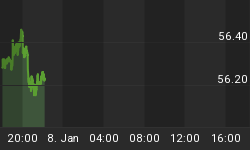Investors should think about volatility as well as mean returns when planning and analyzing their portfolios.
If we could remain investors for long periods, and did not need to take money out for any reason, then volatility would be of less concern. However, the shorter the time horizon for expected withdrawals, the more important volatility (return standard deviation) becomes.
Standard deviation is an important factor in the retiree question; "Can I outlive my money?"
Proper allocation among asset classes in light of volatility is a critical aspect of portfolio design for investors who have changed, or are about to change, life stages from accumulation of assets to consumption of assets.

Real world distribution of investment returns is not so perfectly symmetrical as in the diagram below, but that "normal" distribution "bell curve" is the basis of portfolio theory about volatility risk, measured by standard deviation of returns.
Actual distributions for overall markets tend to be somewhat biased more toward gains than losses, but all markets experience returns that vary over short periods from the mean return generated over long periods.
Nearly all historical and expected returns (99+%) fall within three standard deviations of the mean historical or expected return. However, lurking out there are the unknown and unpredictable market shocks ("Black Swans") that can go out several more standard deviations.
An example of a Black Swan would include the 9/11 terror attack -- something that was not predicted and not really predictable -- something that takes markets entirely by surprise. They are few and generally far between, but powerful (and short?) when they occur.
To minimize the risk associated with Black Swans, diversification among high quality holdings within each asset class and diversification of among asset classes is important -- never too many eggs in one basket.

While an index fund cannot outperform the market it tracks, there are many different markets. There is no single market, and no single investment product that covers all investment markets.
A selection of index funds for a variety of properly chosen markets representing different asset classes, can produce good long-term results.
For most but not all investors, funds are a better choice than individual securities. For many investors, index funds may be the best choice for asset class investments.
Index funds do not outperform their market, but they also do not underperform -- and they almost always have a cost advantage that adds up over time.
A representative (but not exhaustive) list of index funds for the asset classes illustrated above is:
-
US Total Stocks: VTI, IWV and IYY
-
Foreign Developed Market Stocks: EFA and VEA
-
Foreign Emerging Market Stocks: EEM and VWO
-
US REITs: VNQ and IYR
-
Global Commodities: GSG and DJP
-
US Aggregate Bonds: AGG and BND
















